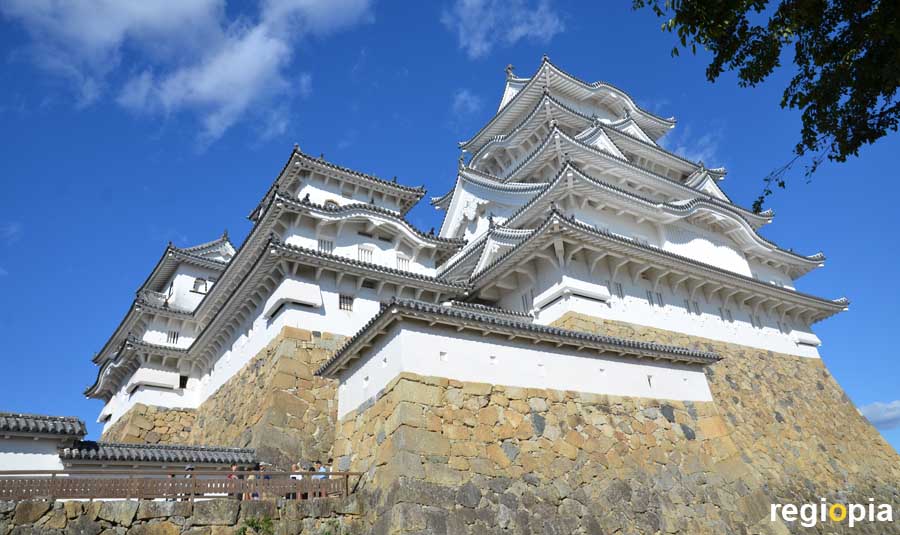
Himeji Castle
Himeji Castle is one of the most famous landmarks of Japan. It is considered the most beautiful samurai castle in Japan and has been declared a World Heritage Site by UNESCO. Of the 3 famous castles in Japan, it is the one with the most visitors. The other two castles are Matsumoto and Kumamoto. Himeji Castle is also called "Castle of the White Crane" (Shirasagi-jo) because of its long white walls.
History of Himeji Castle
The first fortress on the hill was built by Norimura Akamatsu in 1333. A three-story main tower was built by Toyotomi Hideyoshi in 1581. When he died in 1598 a civil war breaks out. After the decisive Battle of Sekigahara in 1600, the Edo period began in Japan. The new ruler Ieyasu Tokugawa united Japan and moves the seat of government to Edo now Tokyo. He donated the castle in Himeji to Terumasa Ikeda, who had the current castle tower and 3 moats built until 1609. Subsequent lords of the castle expand the complex with smaller buildings. After the Meiji Restoration in 1867, the feudal era of the shogunates ended. The castle now belongs to the emperor. The castle survived the Second World War unscathed.
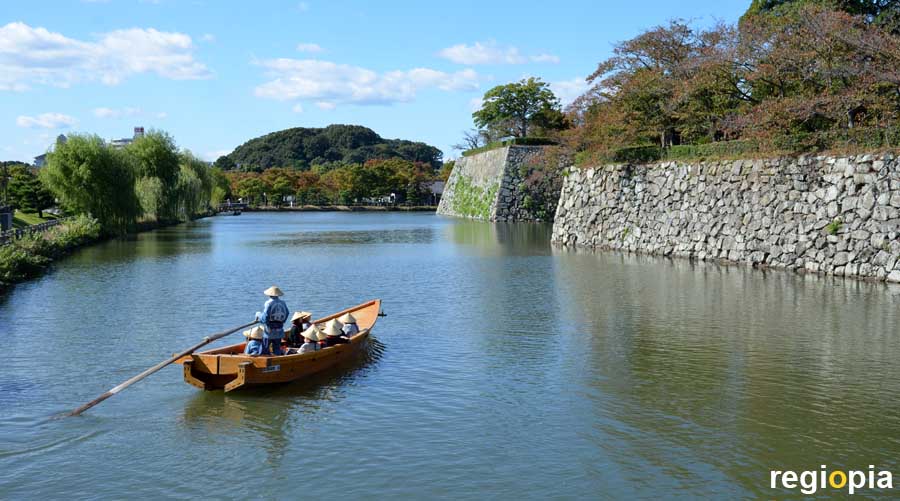
The Moat
From Himeji train station, walk down the wide Otemae Street towards the castle. Before entering the castle area, you stand in front of a wide moat. The bridge Sakuramon-Bashi leads over the moat, from which you can watch the boats going around the castle. The city of Himeji was protected by a city wall. The castle was within the city wall and was separated from the rest of the town by this moat.
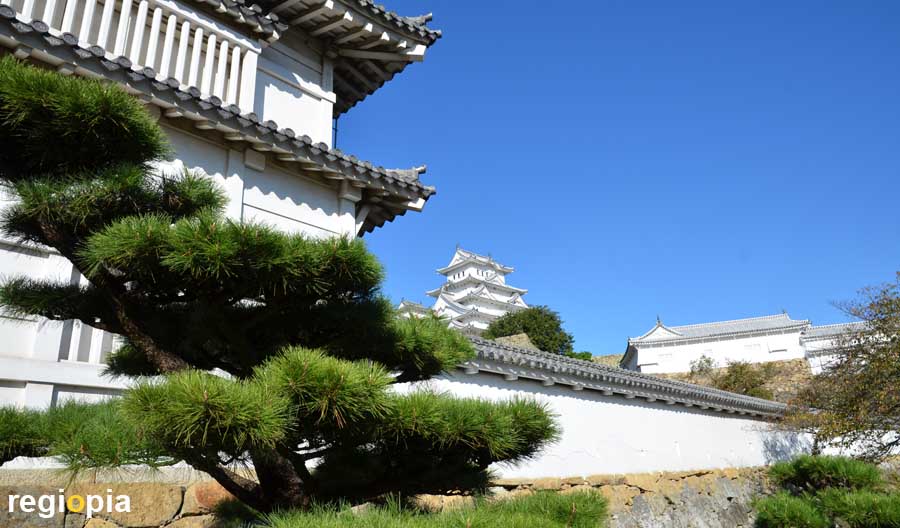
The entrance to Himeji Castle
After leaving the moat behind, you stand on Sannumaru Square. From the large meadow you can see the white walls of the inner castle complex. This is where the entrance to Himeji Castle is located.
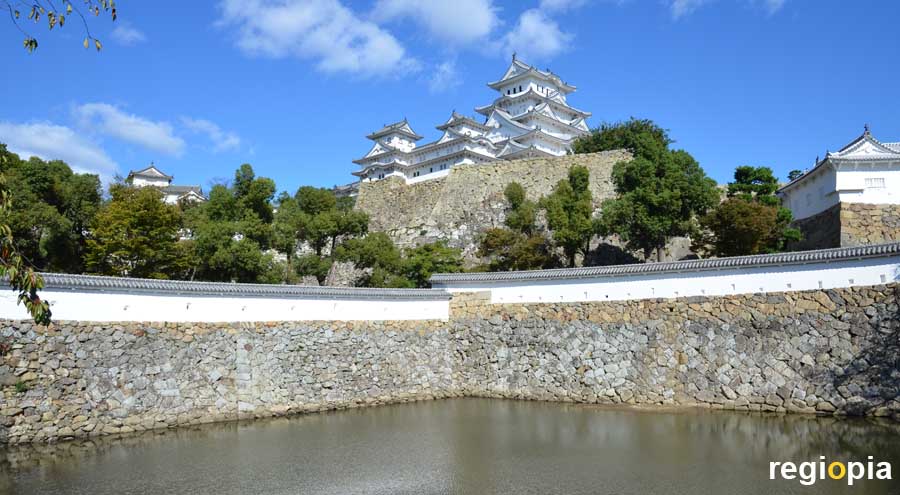
The inner castle wall
After you have passed the entrance, you are in the outer area of the inner castle. There are even more walls and pools in here, to confuse attacers. The water basin on the photo is the Sangoku-bori. This is not another moat to defend the castle, but a basin for fire fighting if the castle burns. The two fish on top of the main tower are figures that are supposed to protect the Himeji Castle against fire.
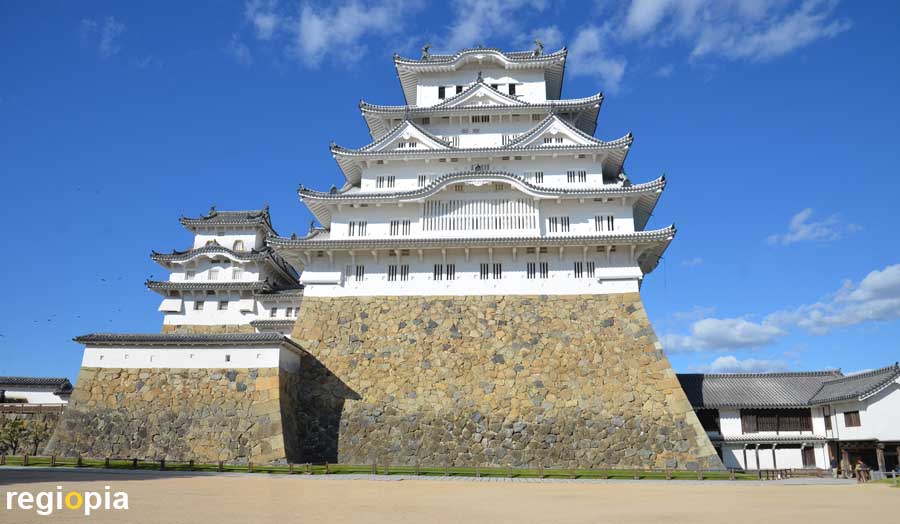
The main castle keep
The main castle keep of Himeji-jo stands on a hill. The base consists of large natural stone blocks that have been artfully joined together. The wooden castle stands on this high stone pedestal. The shogun's rooms are located in the white-painted component. The castle has 6 floors, which get smaller and smaller towards the top.

Inner space of the tower
Another reason why Himeji Castle is so special is that its original wooden structure has been preserved. In Japan there are still many cities with castles from the Middle Ages, but these were mostly burned down at some point and later rebuilt. The Castle of Osaka looks old, but it is a concrete structure with an elevator and modern technology inside. The main tower in Himeji was built in 1609 and has been preserved almost unchanged. The main tower was the last place of retreat in the event of an attack. The armory of Himeji Castle was located here. However, no attacker ever came near the main tower.
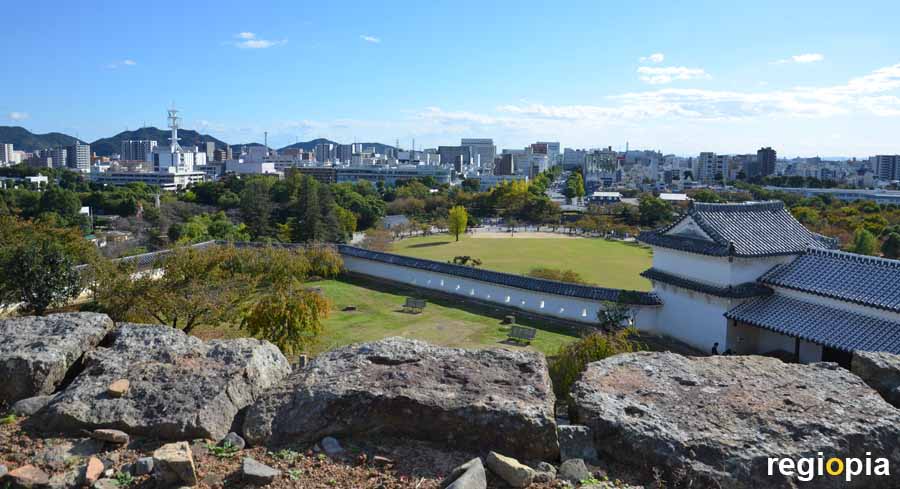
View from the castle
Since the castle is on a hill, you can see the whole city from the upper floors. To the north the wooded mountains rise and to the south you can see the city center of Himeji. Even if the sea begins only 6 kilometers away, you cannot see the water because of the dense development along the coast.
Himeji Map
ads
Travel Guide Himeji
ads
ads


